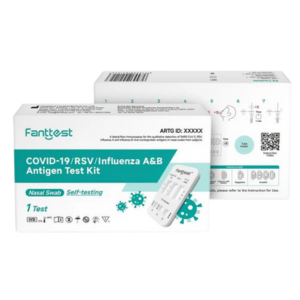Influenza is an infectious disease of humans and animals caused by a virus classified in the Orthomyxoviridae family. It is unique among infectious diseases because it can occur in both seasonal epidemic and pandemic forms. The name of the disease comes from the Italian word for influence, first used by a physician in the fifteenth century to describe the illness, which he thought was caused by the “influence” of “bad air.” The actual causative agent, the human influenza virus, was not successfully isolated until 1933.

Symptoms and complications
Influenza in humans is an acute viral infection of the respiratory tract most often characterized by a fever of 100℉–103℉ (38℃–39℃), headache, sore throat, coughing, muscle aches, joint pains, rhinitis (runny nose), and red or watery eyes. Nausea and vomiting may occur in children with influenza but are uncommon symptoms in adults. Symptoms begin about two days after exposure to the virus and last about a week, although the cough may last for two weeks.
Influenza is spread by airborne droplets released through coughing and sneezing, and it is possible for people to transmit an influenza virus to others before feeling sick themselves. People can also contract influenza by touching a surface (such as a doorknob or countertop) contaminated by mucus containing the virus and then touching their mouths or eyes. The severity of influenza symptoms varies from a mild syndrome that may be mistaken for the common cold in its early stages to respiratory failure and death.
When influenza is circulating in the community, the diagnosis can be made based on the clinical findings of the symptoms described, even without a laboratory test. However, testing should be done if the patient is a candidate for antiviral therapy and if so, treatment should not be held up to await the test results. People at high risk for severe disease should be tested as well as those with a new onset or acute development of respiratory symptoms. Molecular test can differentiate between influenza A and B; rapid tests cannot but give results in less than 20 minutes. The FDA granted an emergency use authorization (EUA) for a co-test in 2020 for the detection of influenza A and/or influenza B viruses as well as SARS-CoV-2, the virus that causes COVID-19. Testing for COVID-19 is often done because some flu symptoms overlap with those of COVID-19.
Complications of influenza include viral pneumonia, secondary bacterial pneumonia, sinusitis, and worsening of such chronic health issues as asthma or heart failure. Some people also experience a psychological depression that may last for several months after the physical symptoms of influenza resolve.Structure of influenza viruses
There were four types of influenza viruses identified as of 2022; they were categorized as A, B, C, and D. The last was discovered in 2011 and given its official name in 2016 by the International Committee of Taxonomy of Viruses (ICTV). Influenza viruses of types A and B mostly cause seasonal epidemics of influenza during most winters in Europe and North America.
Type A, the most virulent type, can cause pandemics when the virus undergoes an abrupt major change, called an antigenic shift, which creates a virus so different from seasonal influenza viruses that people have no immunity to it, allowing it to spread rapidly worldwide. Type A viruses cause disease in humans, other mammals (including domestic pets as well as livestock), and birds. Type B influenza viruses infect humans and seals; they mutate only gradually in a process called antigenic drift and do not cause pandemics. Type C viruses are rare; they can infect humans as well as pigs and dogs, and they sometimes cause severe disease. However they result in only small local epidemics. Type D influenza viruses infect only cattle.
Type A influenza viruses are divided into subtypes on the basis of two proteins found on the surfaces of the virus, hemagglutinins (H) and neuraminidases (N). Hemagglutinins enable the virus particles to attach to a host cell and gain entrance to it, and neuraminidases release the new viruses from the infected cell after replication. As of 2022, there were 18 different known hemagglutinins, numbered 1 through 18, and 11 different neuraminidases, numbered 1 through 11. The numbers were assigned according to the order of each protein’s discovery. In 2022, the influenza A subtype circulating among humans was mostly influenza A (H3N2) with only small numbers of influenza B/Victoria. Type B viruses are classified according to strains and lineages but not subtypes.
There are Rapid Antigen Test Kits that are used in Aged Care homes and other healthcare settings which help to detect and test for Influenza.
Frey, Rebecca J., and Matilde Parente. “Influenza.” The Gale Encyclopedia of Emerging Diseases, edited by Deirdre S. Hiam, 2nd ed., Gale, 2023, pp. 266-273. Gale Health and Wellness, link.gale.com/apps/doc/CX8477100074/HWRC?u=slnsw_public&sid=bookmark-HWRC&xid=7e5ebafe. Accessed 1 Aug. 2024.
KEY TERMS
Antigenic drift—A term that refers to small changes in the genes of an influenza virus that happen over time as the virus replicates. Antigenic drift occurs in all three types of influenza viruses that infect humans.
Antigenic shift—A term that refers to major changes in the genome of an influenza virus that result from the recombination of the genomes of two or more different viral strains. Antigenic shift occurs only in type A influenza viruses.
Hemagglutinin—A protein found on the surface of influenza viruses that allows the virus to bind to sialic acid receptors on target cells and also facilitates the virus’s entry into the cell.
Neuraminidase—An enzyme on the surface of type A influenza viruses that enables new viruses to be released from an infected host cell after replication.



